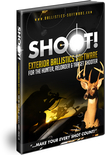If you are considering buying a new, used or refurbished night vision rifle scope, from makers such as ATN, Yukon, Bushnell, Zenit or even a Russian night vision scope, here are three things to consider:
Night Vision Image Quality
All night vision scopes produce a green monochrome image. The sharpness and clarity of that image is dependent upon the scope’s generation number. For example, a Generation 1 night vision scope works best under full moonlight. Generation 2 is better, allowing you to see when the moon is showing only 1/4 phase. Generation 3 is the best, allowing you to see objects in darkness up to 100 yards away.
The higher the Generation number in night vision scopes, the higher the price. Cheap night vision scopes are equipped with Generation 1. Always ask about the Generation number so you know what image quality is to be expected.
Night Vision Scopes – What is the Maximum Range?
At what range do you expect to be shooting at night? 20, 50, 100 yards? If you intend shooting at targets 100 yards away, you need a scope with the highest generation number, ample magnification and a precise aiming system. A scope magnification of 4X is good enough for this range. Magnifications considerably higher than this means less light captured, making it harder to see the target.
However, if you expect to be shooting under full moonlight conditions and not more than 50 yards away, a cheaper Generation 1 night vision scope is perfectly capable.
Before buying a night vision scope, you first need to think about under what conditions you’ll be using the scope then select the appropriate one.
Night Vision Scopes – What About Aiming?
Using a night vision scope on your firearm is useless if you cannot precisely aim (ie, see the crosshairs against the target). The idea of a scope is to help you see the target then allow you to take precise aim before pulling the trigger.
Typically, an infrared illuminator (IR) is used to help with precise aiming when using a night vision scope. The IR illuminator acts like a flashlight, giving you more light at the object being viewed so you can use the scope’s illuminated red dot or crosshair to take precise aim. For long distance shooting in total darkness, a scope equipped with an IR is essential.
TIP: Use your night vision binocular/scope to get back to camp after dark, or use it to get to your favourite whitetail stand before dawn without using a flashlight and alarming the deer.
